
Activities and worksheets on the use and identification of personification.
- Subject:
- English Language Arts
- Material Type:
- Activity/Lab
- Provider:
- Spelling City
- Author:
- Spelling City
- Date Added:
- 02/26/2019

Activities and worksheets on the use and identification of personification.

This is a digital anchor chart.
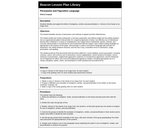
In this lesson, students identify and explain the effect of metaphors, similes, and personification in "Sinners in the Hands of an Angry God"
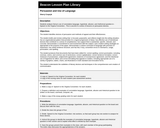
In this lesson, students analyze the use of connotative language, hyperbole, allusion, and rhethorical question in Speech to the Virginia Convention.

In the TED Ed lesson focused on poetry, students will explore repetition in poetry such as assonance, consonance, alliteration, and rhyme. Discussion questions and additional resources are available in the sidebar.
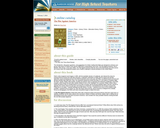
This Random House for High School Teachers reader's guide includes an introduction, discussion questions, and author biography designed to enhance student reading of Pulitzer Prize winner Philip Roth’s novel, The Plot Against America. Set in Newark, New Jersey, in the early 1940s, The Plot Against America tells the story of the Roth family and Jews across the country when the isolationist aviation hero Charles Lindbergh is elected president of the United States.

After students have been introduced to metaphors, this lesson plan keeps them in practice by identifying and analyzing the use of metaphors in poetry.

This resource contains a list of common poetic literary devices with supporting Powerpoint, worksheets and projects.
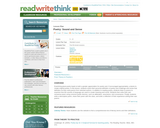
In this lesson, students share their personal definition of poetry and challenge and revise that definition as they read poems from selected authors. In addition to reading poetry, students listen to poems to examine how the sounds of language are used to create meaning and mood. Students then write their own nonsense poem using common poetic devices, such as alliteration, assonance, and consonance. Finally, students write a descriptive poem, share their poem with the class, and write a reflection of their experience.
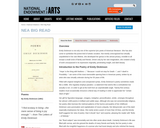
Although virtually unknown during her life, this visionary New England poet is now praised as one of America's most original writers. The Big Read Readers Guide deepens your exploration with biography, timelines, and historical information. We hope these educational materials allow you to have fun with your students while introducing them to the work of a great American poet.
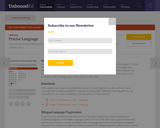
In this lesson, students will discuss the importance of using precise language and domain-specific vocabulary, focusing on paragraphs 8 and 9 of the "Atlanta Compromise Speech."
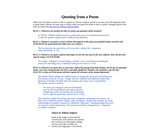
Students are guided through how to use quotes and quotation marks when writing about a poem. A specific example is given using the poem "Fifteen" by William Stafford. Students are then given guided questions and directions to practice the technique using Sylvia Plath's "Mirror" as a sample text. The students are directed to use specficic textual evidence from the poem to discuss the poem's meaning and figurative language.
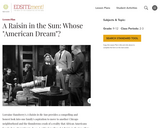
Lorraine Hansberry's A Raisin in the Sun provides a compelling and honest look into one family's aspirations to move to another Chicago neighborhood and the thunderous crash of a reality that raises questions about for whom the "American Dream" is accessible.

Two important speeches to be given during the Cold War were McCarthy’s Fifty-seven Names speech and Truman’s 1947 address to Congress, commonly known as the Truman Doctrine. These documents provide the advanced student the opportunity to analyze persuasive structure in two primary source documents(Reading Informational Texts 5, 6 and 9) as well as provide the opportunity to practice the specific vocabulary that is required for analyzing rhetoric at the advanced and college level (Language 5 and 6). Initially, these documents serve as practice for analyzing rhetoric for advanced students. Beyond the initial analysis of these documents, they pair well with Miller’s popular drama, The Crucible, to support Miller’s interpretation of the zeitgeist of the 1950s. This lesson was developed by NCDPI as part of the Academically and/or Intellectually Gifted Instructional Resources Project. This lesson plan has been vetted at the state level for standards alignment, AIG focus, and content accuracy.
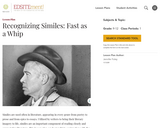
This resource includes a lesson and accompanying activities designed to assist learners at the high school level with engaging with similes on a deeper level. Students will spend time reading excerpts from Robert Frost, William Wordsworth and Toi Derricotte in an attempt to better understand the function of similes. Students will analyze similes from the sources and students will practice writing their own similes using predefined topics.

In this 3 day lesson plan on The Rhetorical Triangle from PBS Learning Media, students will focus on understanding Aristotle’s three elements of persuasive speech—the ancient Greek words ethos, pathos and logos. Additionally, students will be able to analyze the effectiveness of rhetorical strategies and elements in commercials and speeches.
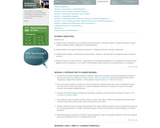
In this lesson, students complete multiple readings of Jonathan Swift’s 1729 essay "A Modest Proposal": guided reading with the teacher, a collaborative reading with a peer, and an independent reading. After independent reading, pairs of students develop a mock television newscast or editorial script, like those found on Saturday Night Live’s “Weekend Update,” The Daily Show with Jon Stewart, or The Colbert Report, including appropriate visual images in PowerPoint.

In this lesson, students will use multiple intelligences to interpret and study Sonnets 29, 116, and 130 by William Shakespeare. Students will focus on metaphor, simile, mood, end rhyme, and iambic pentameter.

Activities and worksheets on the use and identification of similies.
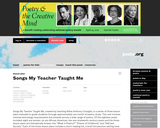
In this extensive, 20 class period unit from the Academy of American Poets, students will explore three different themes: "What is Poetry?", "Poems of Chidhood," and "Self and Society."